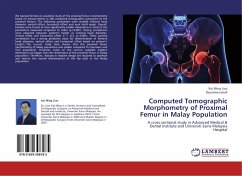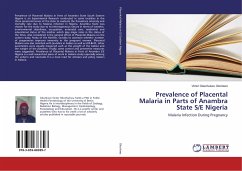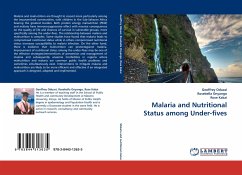
Computed Tomographic Morphometry of Proximal Femur in Malay Population
A cross sectional study in Advanced Medical & Dental Institute and Universiti Sains Malaysia Hospital
Versandkostenfrei!
Versandfertig in 6-10 Tagen
32,99 €
inkl. MwSt.

PAYBACK Punkte
16 °P sammeln!
We had performed an anatomic study of the proximal femur morphometry based on measurements in 280 computed tomographic scanogram of the proximal femora. The following parameters were studied: femoral head diameter, vertical offset, horizontal offset and neck shaft angle. Overall, females were found to have significantly smaller dimensions in most of the parameters measured compared to males (p 0.3, p0.001). These positive correlations has a strong predictive value for determination of femoral head diameter, vertical offset and horizontal offset based on patient s height. The current study have...
We had performed an anatomic study of the proximal femur morphometry based on measurements in 280 computed tomographic scanogram of the proximal femora. The following parameters were studied: femoral head diameter, vertical offset, horizontal offset and neck shaft angle. Overall, females were found to have significantly smaller dimensions in most of the parameters measured compared to males (p 0.3, p0.001). These positive correlations has a strong predictive value for determination of femoral head diameter, vertical offset and horizontal offset based on patient s height. The current study have shown that the proximal femur morphometry of Malay population was smaller compared to Caucasion and Thai population. However, some of the current available implant dimensions are bigger than the dimensions of the proximal femur in Malay population. Therefore, changes in implant design are required to optimize and restore the normal biomechanics of the hip joint in the Malay population.












